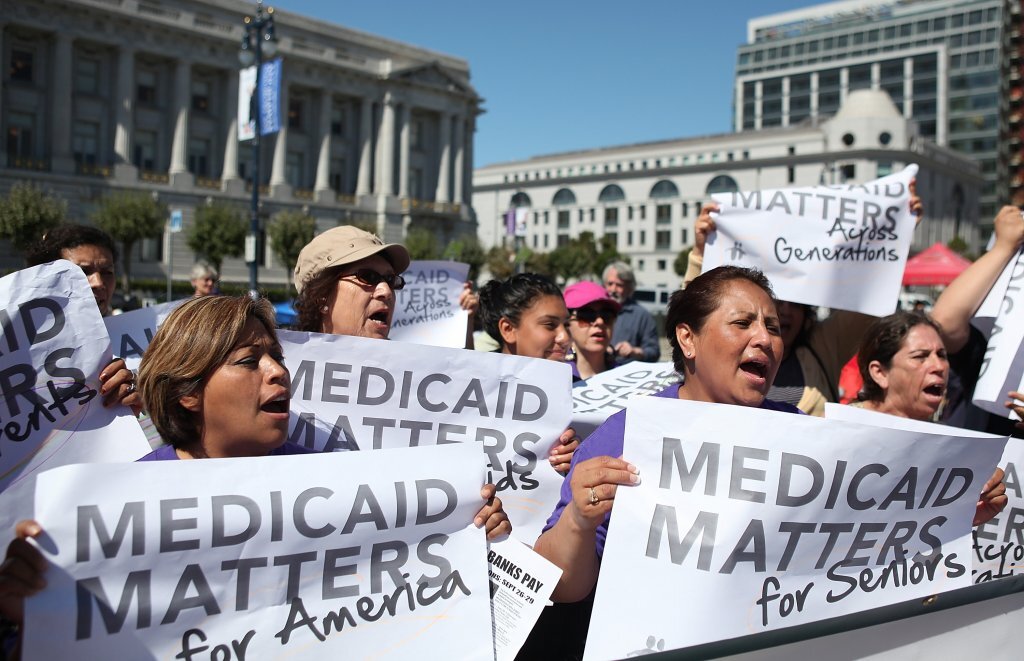5:55
News Story
Half a million people in less than a dozen states have lost Medicaid coverage since April
In Missouri, it’s estimated 200,000 people could eventually lose Medicaid coverage. But the earliest impacted group has until June 30 to return any required information to the state or lose coverage July 1
More than 500,000 people across 11 states have lost their Medicaid coverage since the unwinding of a policy that allowed people to stay in the program throughout the pandemic.
The data, reported by the states and tracked by health policy researcher KFF, shows that of the five states providing data on people who lost Medicaid coverage for procedural reasons rather than not meeting eligibility requirements, Indiana and Arkansas have the largest share.
The rate of disenrollment is highest in Florida among the nine states that provided public data for the number of people renewed for Medicaid and the number of people who lost coverage.
In Missouri, it’s estimated 200,000 people could eventually lose Medicaid coverage. But the state is getting a later start than most, as the earliest impacted group has until June 30 to return any required information to the state or lose coverage July 1.
Missouri agency says it’s increasingly utilizing more efficient Medicaid renewal process
State officials are utilizing a more-efficient method to process Medicaid renewal applications in the hopes of avoiding procedural issues leading to eligible Missourians losing coverage.
At the start of the COVID-19 pandemic in 2020, Congress passed legislation that boosted Medicaid funds to the states. In return, the legislation required state Medicaid programs to guarantee recipients continuous coverage and suspended a requirement for patients to prove annually that they qualified.
In April, KFF researchers estimated that between 8 million and 24 million people would lose their coverage by May 2024. They also pointed out that many people eligible for Medicaid would lose coverage simply because of problems with paperwork or other procedural reasons.
That has proved true in several states. In Indiana and Arkansas, 88.5% of those who lost coverage did so because they did not complete the enrollment process. The numbers were also high in Florida, with the state unable to confirm eligibility for more than 82.2% of those dropped.
Jennifer Tolbert, director of state health reform and an associate director for the program on Medicaid and the uninsured at KFF, said there needs to be more data to understand how widespread the procedural problems are. But nearly two-thirds of Medicaid enrollees said they did not have a change in circumstances that would make them ineligible in a survey from KFF taken in February and March.
“Even among these states where we have early data, I think we need another month or two of data to understand whether what we’re seeing is sort of a trend and indicative of … an underlying issue or whether the people some of these states are targeting were people that hadn’t responded to requests, and that the groups going forward, the subsequent renewals, people will be more likely to respond, and so we won’t see such high procedural disenrollment rates,” she said.
Nearly 250,000 Floridians have been disenrolled since the process began in April. In Arkansas, 72,800 people lost Medicaid and 53,000 people were disenrolled in Indiana.
The lowest disenrollments were in Idaho, Pennsylvania, and Nebraska. Idaho paused disenrollments in April because of technical problems and Pennsylvania decided to only report disenrollments for people who had maintained coverage because of continuous enrollment, not the full number of people who lost coverage, according to KFF. The disenrollment rate also ranges widely from state to state, with a 54% disenrollment rate in Florida compared to 10% in Virginia and Pennsylvania.
“We don’t know exactly why that is the case, but possibly because states are taking different approaches to these early renewals, and you have states like Florida and Arkansas that are targeting people they think are no longer eligible,” Tolbert said.. “Other states like Pennsylvania, like Virginia, are just doing a time-based approach where they’re renewing people in the month that their renewal is due. So they’re not targeting individuals who they think are no longer eligible. That could partially explain some of the differences.”
Tolbert cautioned that it’s important not to wait too long to assess the data for possible policy issues that are contributing to people losing Medicaid.
“The challenge is,” she said, “you don’t want it to go too far because if it truly is a problem that warrants addressing in some way, you don’t want to get to the point where you’re six months down the road and millions of people have lost coverage inappropriately.”
KFF has not revised its estimate for the Medicaid coverage loss from its April analysis. The timeline for people losing Medicaid began in some states earlier than others.
In April, five states started the disenrollment process and in May, 14 states began theirs. By October, the last state to start its process, Oregon, will join the rest of the country. But that doesn’t mean we’ll know the disenrollment numbers when the states have them. Although states are required to communicate that data to the Centers for Medicare and Medicaid Services (CMS), states won’t necessarily release it to the public immediately, Tolbert said. However, CMS is required to make this data public.
CMS has the ability to pause procedural disenrollment if states have “compliance issues,” Tolbert said, but it’s unclear what kinds of problems would be severe enough to warrant CMS taking action or how long that pause could last.
“… That’s a little bit of a subjective decision, to decide when the state has taken enough steps to correct whatever issues that CMS has identified,” Tolbert said. “That hasn’t come into play yet.”
Our stories may be republished online or in print under Creative Commons license CC BY-NC-ND 4.0. We ask that you edit only for style or to shorten, provide proper attribution and link to our website. AP and Getty images may not be republished. Please see our republishing guidelines for use of any other photos and graphics.





